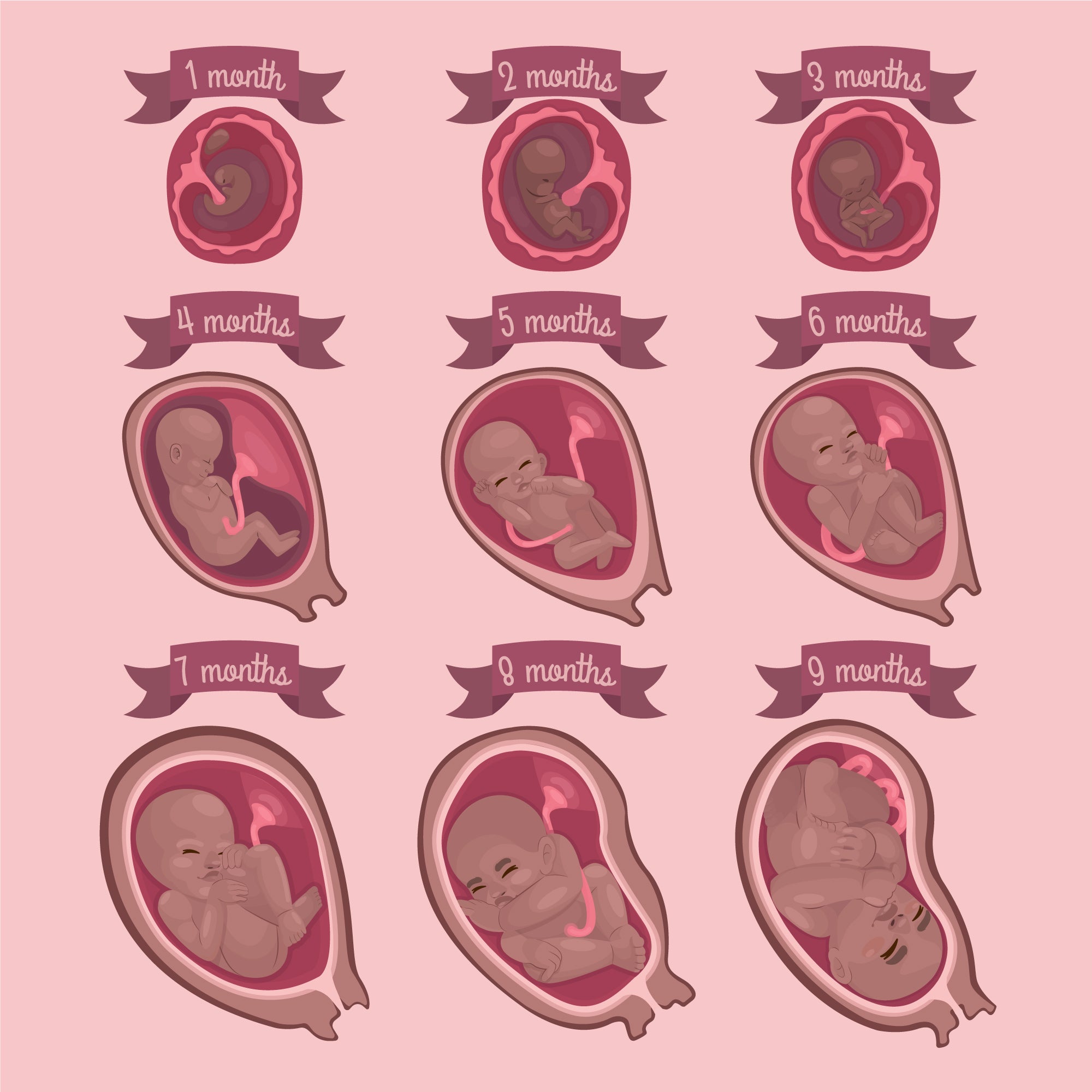I’m sure by now we’ve all heard a few different things about the placenta and what exactly happens to it before, during, and after birth. Maybe you’ve heard that you have to “birth” the placenta after you’ve given birth to your baby, or maybe this is your first-time hearing that! Either way, as your big sister throughout this pregnancy (Rumbly) we're here to tell you the truth, the whole truth, and nothing but the truth. So let's dive in...
The first truth is that the placenta is an extraordinary organ that plays a crucial role in the development of a baby. Often described as the lifeline between mother and baby, it provides essential nutrients, oxygen, and waste removal. Safe to say, the placenta is an extremely important team player in keeping your baby safe and healthy from the womb into the real world.
Before Birth: Formation and Function
Shortly after a fertilized egg implants in the uterine wall, the placenta begins to form. This is typically around the fourth week of pregnancy. The placenta develops from the same cells as the embryo and grows alongside it, becoming fully functional by the end of the first trimester.
During pregnancy, the placenta serves multiple roles:
- Nutrient and Gas Exchange: It transfers oxygen and nutrients from the mother’s blood to the fetus while removing carbon dioxide and other waste products from the baby’s blood.
- Hormone Production: The placenta produces hormones such as human chorionic gonadotropin (hCG), progesterone, and estrogen, which are vital for maintaining pregnancy and preparing the mother’s body for childbirth.
- Protection: It acts as a barrier, though not an impenetrable one, against certain infections and harmful substances while allowing antibodies to pass through and provide the baby with immunity.
The placenta attaches to the wall of the uterus and connects to the fetus via the umbilical cord, ensuring a steady supply of blood flow. As the pregnancy progresses, the placenta grows and adapts to meet the increasing needs of the developing fetus.
It’s truly quite magical when you fully understand everything the placenta is doing for you and your little one. Our bodies just know what to do!

During Birth: The Placental Stage
Labor is typically divided into three stages: dilation, expulsion, and the placental stage. The third stage involves the delivery of the placenta and is crucial for the health of both mother and baby.
- After the Baby is Born: Once the baby is delivered, the uterus continues to contract. These contractions are less intense than those during the earlier stages of labor but are essential for the next process.
- Placental Separation: These contractions help the placenta detach from the uterine wall. As it separates, small blood vessels are torn, which might cause some bleeding.
- Expulsion: The mother will then push to expel the placenta from her body. This process usually occurs within 5 to 30 minutes AFTER the baby is born. Note: Healthcare providers often massage the uterus and may apply gentle traction to the umbilical cord to assist in this process.
The delivery of the placenta marks the end of childbirth, but it is closely monitored to ensure that it is complete. Any retained placental tissue can lead to complications such as infection or postpartum hemorrhage.
After Birth: The Aftermath
Post-delivery, the placenta undergoes significant changes and has various potential fates, depending on cultural practices, medical needs, or personal choice.
- Medical Examination: Immediately after birth, the placenta is examined by healthcare providers to ensure that it is intact and healthy. This examination can provide insights into the health of the pregnancy and any potential issues.
- Cultural Practices: Different cultures have various traditions related to the placenta. Some families choose to bury the placenta in a special place, believing it holds spiritual significance, while others might consume it—a practice known as placentophagy—believing it has health benefits.
- Medical Use: In some cases, placental tissue is donated for medical research or therapeutic purposes. Placental cells have shown promise in regenerative medicine and wound healing.
Now, before we sign-off on this article..
During labor our bodies go through A LOT. Delivering a baby and a placenta is certainly no small event, and it is incredibly important to take extra special care of yourself during your postpartum.
Often though, birthing parents don’t know how or what they need to take care of themselves. This is why I thoughtfully curated an industry best Postpartum Essentials Box for new and expecting moms, to help better prepare new moms for their postpartum period, while also ensuring that their fourth Trimester is a time of more enjoyment.
I also put together the absolute best (IMO) Labor, Delivery and Hospital Box to help modern expecting moms better prepare for the big day!
Ultimately though, however you birth and whatever your birth preferences may be, I want you to go into your big day feeling confident and prepared, which is exactly why I curated these special rumbly boxes - just for you.
Sending hugs,
rumbly 💜






